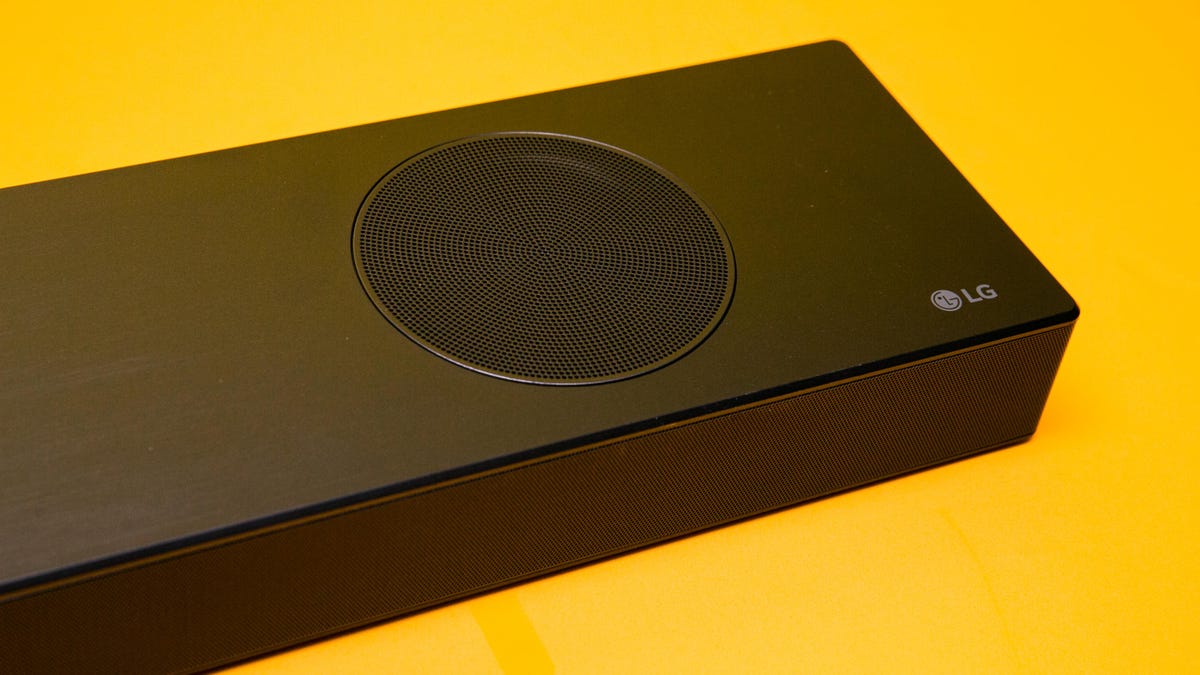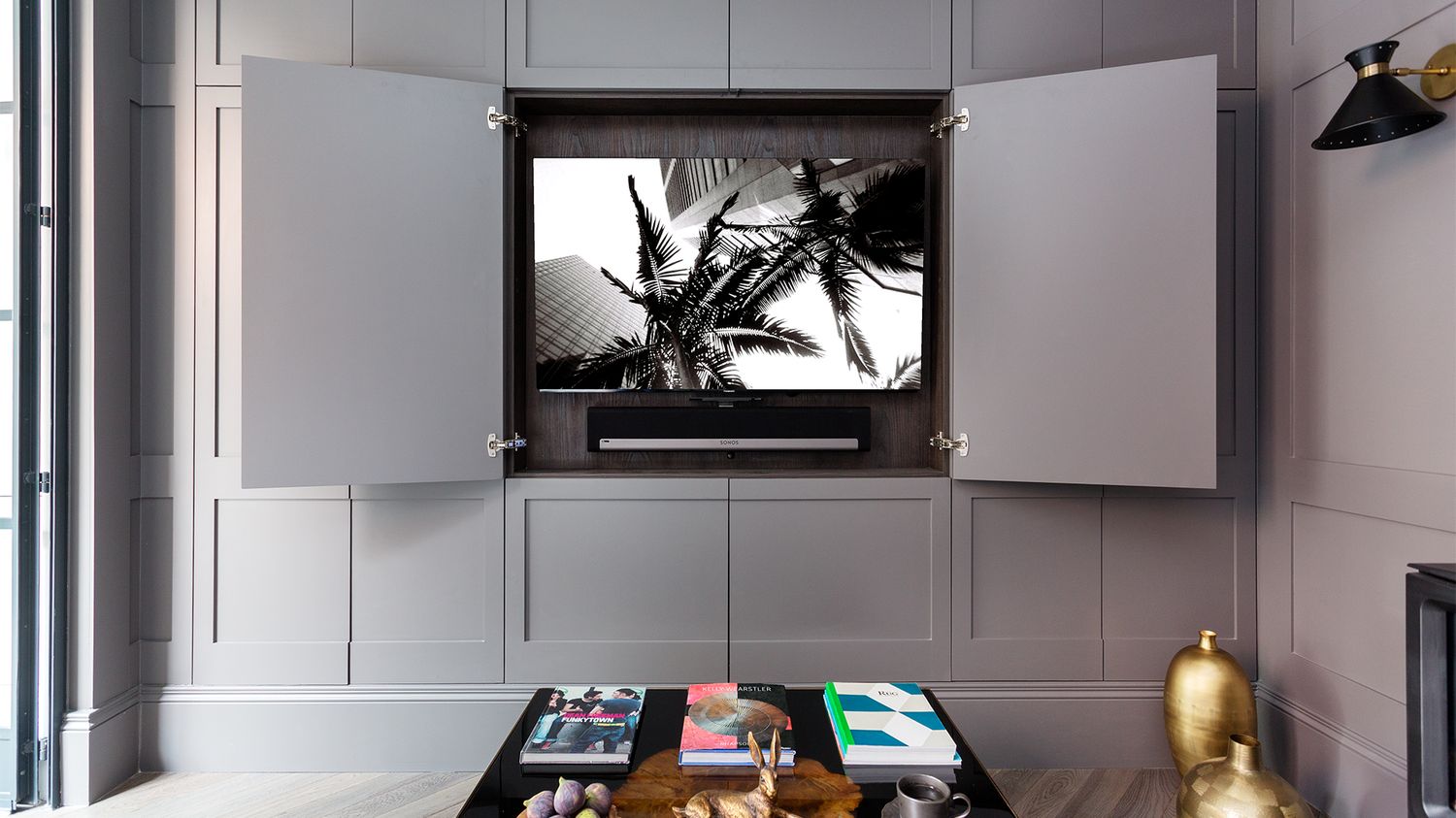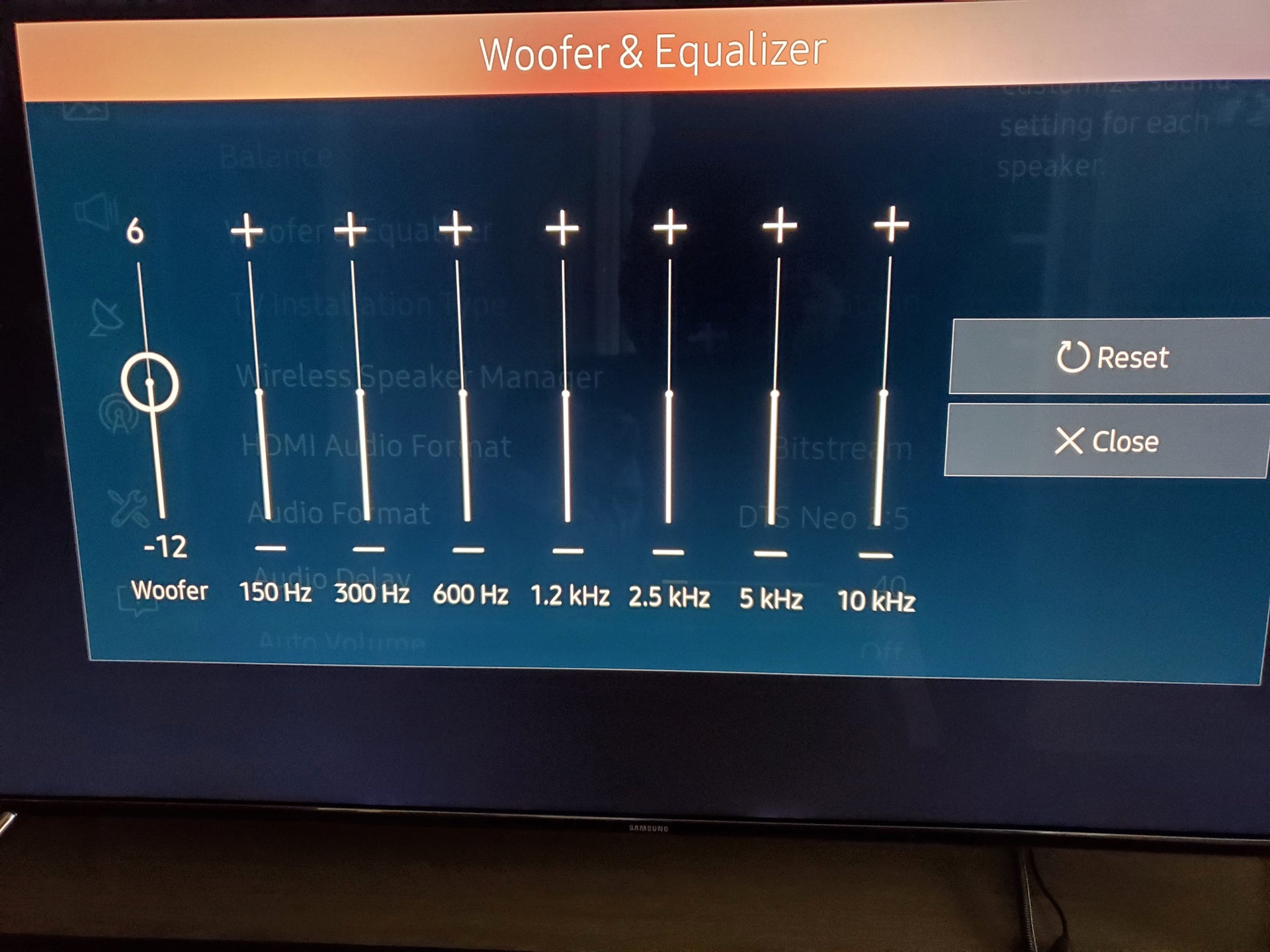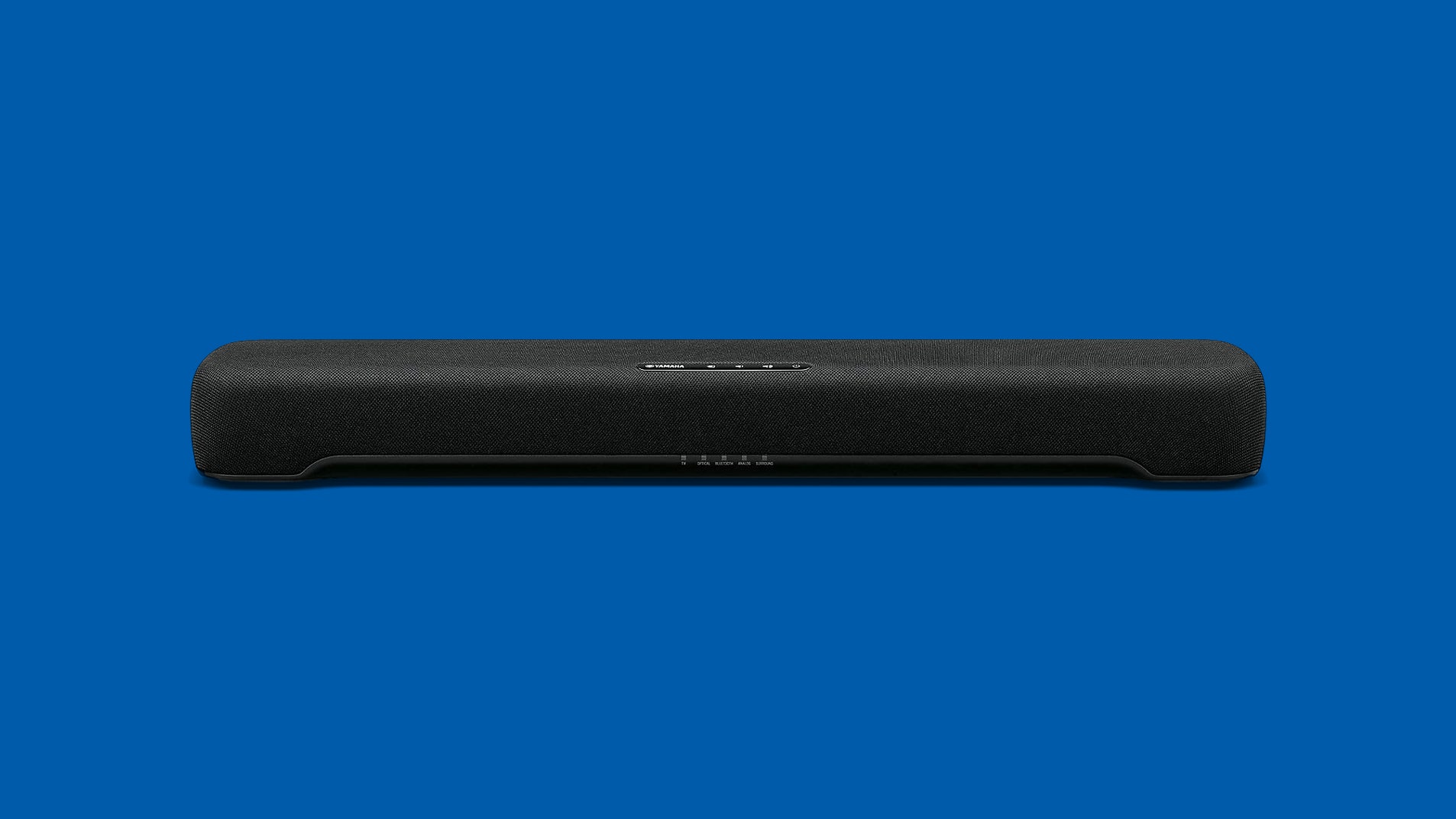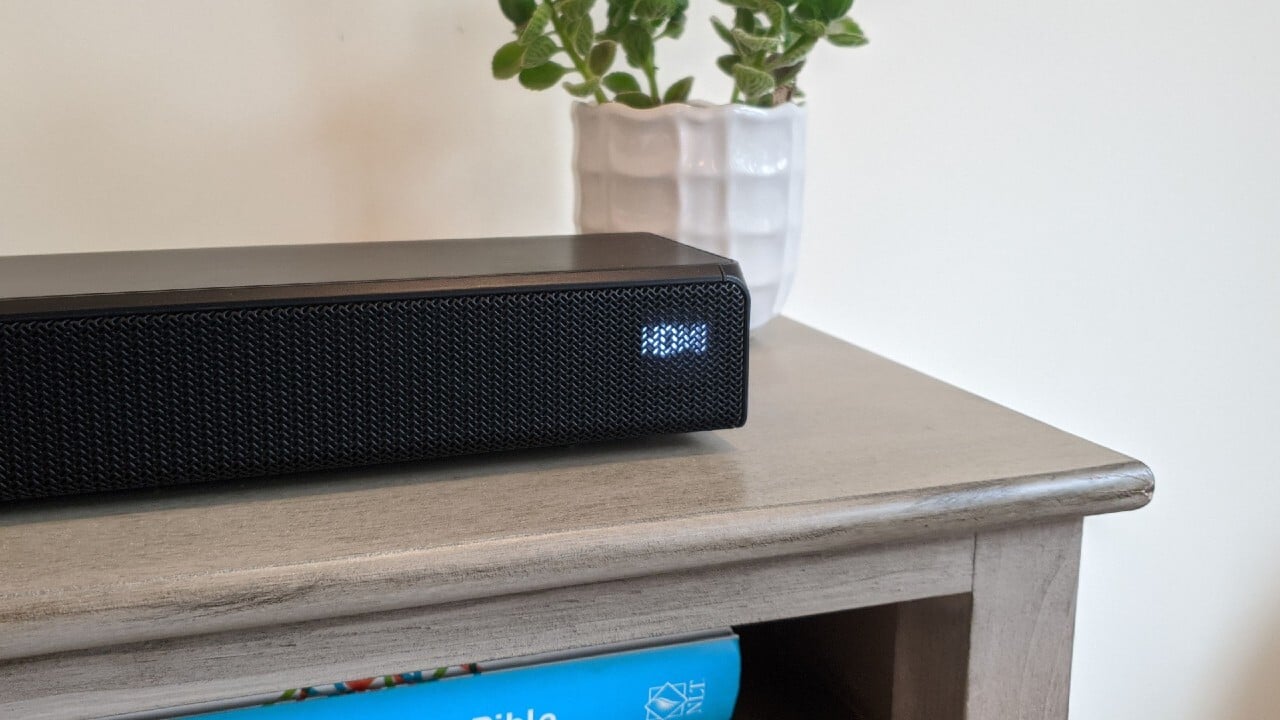Home>Production & Technology>Sound Bar>Where To Put A Sound Bar
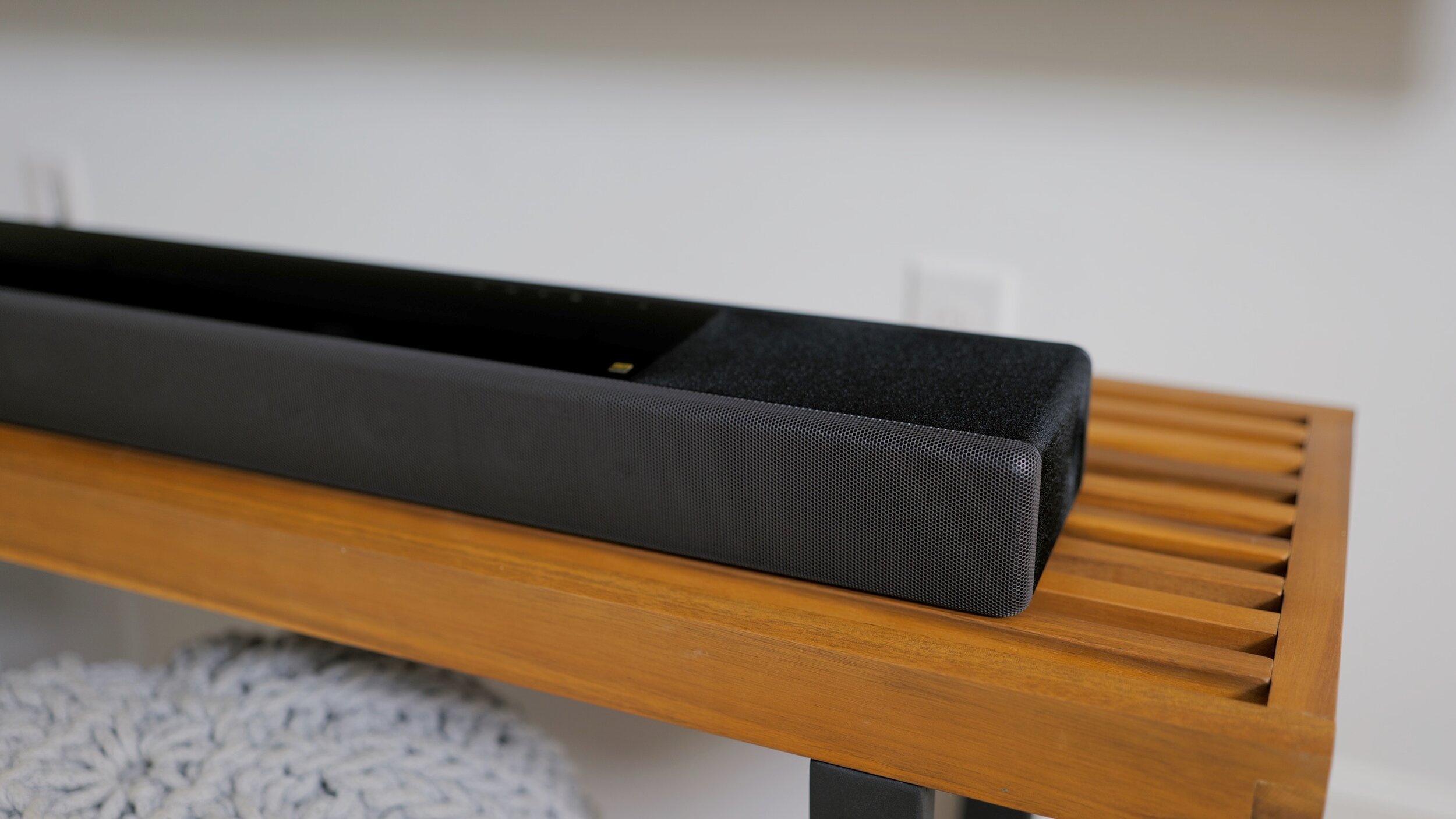

Sound Bar
Where To Put A Sound Bar
Published: December 25, 2023
Looking for the perfect spot to place your sound bar? Discover the best locations and positioning tips to optimize your sound experience at home.
(Many of the links in this article redirect to a specific reviewed product. Your purchase of these products through affiliate links helps to generate commission for AudioLover.com, at no extra cost. Learn more)
Table of Contents
Introduction
A sound bar is an excellent addition to any home theater setup, providing a high-quality audio experience without the need for multiple speakers and complex wiring. With their sleek design and compact size, sound bars have become increasingly popular in recent years, offering convenience and immersive sound for movies, music, and games.
In this article, we will explore the different placement options for sound bars, helping you determine the best location for optimal audio performance in your home. Whether you are setting up a new entertainment system or looking to improve your existing setup, understanding the placement options and their respective benefits will ensure you get the most out of your sound bar.
Before we delve into the specific details of where to put your sound bar, let’s first highlight some of the key benefits they offer.
- Enhanced Audio Quality: Sound bars are designed to provide superior sound quality compared to built-in TV speakers. With advanced audio technologies and multiple drivers, sound bars deliver immersive audio, crisp dialogue, and powerful bass, elevating your overall entertainment experience.
- Space-Saving Design: Sound bars are sleek and compact, making them a perfect choice for small spaces or rooms with limited placement options. They can be easily mounted on the wall below or above your TV or placed on a stand without cluttering your space.
- Easy Installation: Unlike traditional surround sound systems that require extensive wiring and multiple speakers, sound bars offer simple and hassle-free installation. Most sound bars connect to your TV through HDMI or optical cables, making it a straightforward setup process.
- Versatility: Sound bars are versatile, compatible with various audio sources, including TVs, smartphones, gaming consoles, and streaming devices. This flexibility allows you to enjoy high-quality audio from different sources, enhancing your entertainment options.
Benefits of Sound Bars
Sound bars offer several advantages that make them an attractive choice for enhancing your home audio setup. Let’s explore some of the key benefits of using a sound bar:
- Improved Sound Quality: Sound bars are designed to provide a superior audio experience compared to built-in TV speakers. With carefully placed speakers and advanced audio technologies, they offer clearer dialogue, immersive surround sound, and powerful bass. This means you can enjoy movies, music, and games with enhanced audio quality, bringing your entertainment to life.
- Space Efficiency: One of the major advantages of sound bars is their space-saving design. Unlike traditional surround sound systems with multiple speakers spread around the room, a sound bar is a single unit that can be placed below or above your TV or mounted on the wall. This eliminates the need for additional floor space or intrusive speaker wires, making sound bars ideal for small living rooms or apartments.
- Simplicity of Setup: Setting up a sound bar is quick and easy. Most sound bars can be connected to your TV using a single HDMI cable or an optical cable. This eliminates the need for complicated wiring and makes the installation process hassle-free. Some sound bars even offer wireless connectivity options, allowing you to stream audio directly from your smartphone or other devices.
- Versatile Connectivity: Sound bars are compatible with a wide range of audio sources, including TVs, gaming consoles, Blu-ray players, and streaming devices. Some models also offer Bluetooth or Wi-Fi connectivity, enabling you to stream music wirelessly from your smartphone or tablet. With multiple input options, you can easily switch between different audio sources and enjoy a seamless audio experience.
- Aesthetic Appeal: In addition to their audio capabilities, sound bars are visually appealing. They are designed to complement the sleek and modern look of flat-screen TVs, adding a touch of elegance to your home theater setup. Whether you choose to place the sound bar on a stand or mount it on the wall, it will blend seamlessly with your entertainment area.
- Cost-Effectiveness: Compared to traditional multi-speaker surround sound systems, sound bars offer a cost-effective solution for improving your audio setup. They provide a significant boost in audio quality without the need for purchasing and setting up multiple speakers, which can be more expensive and time-consuming.
Overall, sound bars are a versatile and practical choice for enhancing your home audio experience. Whether you are a movie lover, music enthusiast, or avid gamer, a sound bar can elevate your entertainment to new heights with its improved sound quality, space-saving design, and ease of installation.
Factors to Consider
When determining the placement of your sound bar, there are several factors to consider to ensure optimal audio performance and a seamless integration with your home theater setup. Let’s explore these factors:
- Room Layout: Take into account the layout of your room and the location of your TV. Consider the size and shape of the room, the placement of furniture, and any obstacles that may affect the sound projection. Ideally, you want to place the sound bar in a position that allows for even distribution of sound throughout the space.
- TV Placement: The position of your TV will play a significant role in determining the placement of your sound bar. Depending on the size and design of your TV, you can choose to place the sound bar above, below, or even directly in front of the TV. Consider the aesthetic appeal and practicality of each placement option.
- Wall Mounting: If you opt for wall mounting, ensure that the wall is sturdy and can support the weight of the sound bar. Additionally, consider factors such as wall height, viewing angle, and distance from the seating area.
- Audio Projection: Determine the direction in which the sound bar is designed to project sound. Some sound bars are specifically designed for vertical or surround sound projection, while others offer more versatility. Keep in mind the acoustics of your room and aim to position the sound bar in a way that maximizes audio projection and provides an immersive listening experience.
- Connection Options: Consider the available connection options on your TV and sound bar. Ensure that your chosen placement option allows for easy and convenient connection without the need for excessive cable lengths or tangled wires.
- Furniture Compatibility: If you plan to place the sound bar on a stand or a piece of furniture, make sure it is compatible with the size and weight of the sound bar. Ensure the stand or furniture is stable and provides adequate ventilation for the sound bar to prevent overheating.
It is important to note that the ideal placement for your sound bar may vary depending on your specific room and setup. Take the time to experiment with different placement options and listen to the audio quality from different seating positions to find the arrangement that best suits your preferences.
By considering these factors, you can determine the optimal placement for your sound bar and enjoy immersive, high-quality audio that enhances your overall home entertainment experience.
Placement Options
When it comes to placing your sound bar, there are several options to consider, each with its benefits and considerations. Let’s take a closer look at some of the most popular placement options:
- Above the TV: Placing the sound bar above the TV is a popular choice, as it creates a clean and streamlined look. Ideally, the sound bar should be centered horizontally with the TV and positioned slightly below eye level. This placement helps to ensure that the sound is projected towards the viewer, enhancing the overall audio experience. However, keep in mind that if your TV is mounted on the wall, you’ll need to ensure that the wall is sturdy enough to support the weight of the sound bar.
- Below the TV: Placing the sound bar below the TV is another common option, especially if you have a stand or an entertainment center. This placement provides a sleek and unified look, with the sound bar seamlessly integrating with the TV. Ensure that the sound bar is centered and positioned close to the edge of the furniture to avoid any obstruction. This placement can provide excellent audio projection if the sound bar is designed to project sound vertically.
- Wall Mounting: Wall mounting the sound bar is a space-saving option that allows for maximum flexibility in placement. You can position the sound bar directly below the TV or mount it slightly higher for optimal audio projection. Ensure that the sound bar is securely mounted and that the wall can support its weight. Also, consider using cable management solutions to hide the cables and maintain a tidy appearance.
- In-Cabinet or Furniture Placement: If you have a cabinet or furniture below your TV, you can place the sound bar inside it. Ensure that the cabinet or furniture provides enough space for the sound bar and allows for proper sound dispersion. You may need to make some adjustments to the shelves or use risers to elevate the sound bar for better audio projection. However, be mindful of any potential sound distortion caused by enclosed spaces.
- Other Considerations: In any placement option, consider the distance between the sound bar and the seating area. The sound bar should be positioned in a way that allows for optimal audio projection and ensures that all viewers can hear the audio clearly. Additionally, make sure there are no obstructions blocking the sound bar, such as plants or decorative objects, as this can affect sound quality.
Remember, the best placement for your sound bar will ultimately depend on your room layout, personal preference, and the specific features of your sound bar. Experiment with different options to find the arrangement that delivers the most immersive and enjoyable audio experience for your home theater setup.
Above the TV
Mounting the sound bar above the TV is a popular placement option that offers both aesthetic appeal and optimal audio projection. Here are some key points to consider when placing your sound bar above the TV:
Centered Alignment: When positioning the sound bar above the TV, ensure that it is centered horizontally, creating a visually balanced look. Aligning the sound bar with the TV also helps to create a cohesive and clean overall appearance in your home theater setup.
Proper Height: Aim to position the sound bar slightly below eye level when seated to ensure that the audio is projected towards the viewer. This positioning allows for clearer dialogue and an immersive sound experience without straining your neck. Experiment with the height to find the sweet spot that offers optimal audio performance.
TV Mount Considerations: If your TV is mounted on the wall, you’ll need to ensure that the wall mount is sturdy enough to support the weight of both the TV and the sound bar. Check the weight capacity of the TV mount and make sure it can accommodate the additional weight. Consult the manufacturer’s guidelines for both the TV and sound bar to ensure compatibility with wall mounting.
Cable Management: To maintain a tidy and clutter-free look, consider using cable management solutions to hide the wires and maintain a sleek appearance. This can be especially important when mounting the sound bar above the TV. Use adhesive cable clips or cable covers to secure and conceal the cords along the wall or TV mount for a clean and professional-looking installation.
Sound Projection: When positioning the sound bar above the TV, it is important to consider the direction in which the sound is projected. Some sound bars are designed to project sound horizontally, while others have speakers that are angled towards the viewer for a more direct audio experience. Ensure that the sound bar’s audio projection matches your seating arrangement, providing a balanced and immersive soundstage for everyone in the room.
Placing the sound bar above the TV not only provides an elegant and streamlined look but also offers optimal audio projection. By aligning the sound bar with the TV and positioning it at the proper height, you can create an immersive audio experience that enhances your home theater setup.
Below the TV
Placing the sound bar below the TV is a popular option that offers a sleek and seamless integration with your home theater setup. Here are some key considerations when positioning your sound bar below the TV:
Aesthetic Appeal: Placing the sound bar below the TV creates a clean and unified look, with the sound bar seamlessly blending with the TV. This placement option is especially ideal if you have a stand or an entertainment center below your TV, providing a cohesive and visually appealing setup.
Centered Alignment: When positioning the sound bar below the TV, ensure that it is centered horizontally with the TV to maintain a balanced and symmetrical appearance. The sound bar should be aligned with the edges of the TV or the furniture it sits on, creating a visually pleasing arrangement.
Audio Projection: Some sound bars are specifically designed to project sound vertically, creating an immersive audio experience. When placing the sound bar below the TV, ensure that the speakers are angled towards the viewer to deliver clear and directed audio. Experiment with the positioning and tilt of the sound bar to find the optimal angle for optimal sound projection.
Obstruction-Free Placement: Make sure that there are no obstructions blocking the sound bar, such as decorative objects or plants, as they can interfere with sound dispersion. Keeping the area around the sound bar clear allows for unobstructed audio projection and ensures that you can fully enjoy the immersive sound experience.
Weight and Stability: If you choose to place the sound bar on a stand or an entertainment center below the TV, ensure that the furniture can adequately support its weight. Verify the weight capacity of the furniture and ensure that it provides a stable and secure base for the sound bar. This will help prevent any potential accidents or damage to the equipment.
The placement of the sound bar below the TV offers a seamless and visually appealing setup. By aligning the sound bar with the TV, considering audio projection, and ensuring proper stability, you can create an immersive audio experience that enhances your overall viewing enjoyment.
Wall Mounting
Wall mounting your sound bar is a space-saving and visually appealing option that allows for optimal audio projection. Here are some important factors to consider when wall mounting your sound bar:
Sturdy Wall Mount: Before proceeding with wall mounting, ensure that the wall can support the weight of both the sound bar and any additional components, such as a TV. Use a sturdy wall mount that is appropriate for the size and weight of your sound bar. Follow the manufacturer’s instructions and guidelines to ensure a secure and safe installation.
Positioning: When wall mounting the sound bar, consider the position that provides the best audio projection and viewing experience. Aim to position the sound bar below the TV or slightly above eye level, ensuring that the speakers are angled towards the listener. This placement optimizes sound dispersion and creates a more immersive audio experience.
Cable Management: To maintain a clean and organized look, use cable management solutions to hide the wires and prevent them from hanging loose. Run the cables along the wall or through a cable cover to create a neat and professional installation. This will not only enhance the aesthetic appeal but also prevent any accidental damage to the cables.
Accessibility: Consider the accessibility of the sound bar when wall mounting. Ensure that you can easily access the control buttons and input ports without any obstructions. Test the functionality of the sound bar before finalizing the wall mounting position to ensure that it is easy to operate and adjust as needed.
Avoiding Reflections: When wall mounting your sound bar, try to avoid placing it directly in front of reflective surfaces, such as windows or mirrors. Reflections can adversely affect sound quality and create unwanted echoes or distortions. Opt for a wall space that minimizes reflective surfaces to ensure optimal audio performance.
Adjustability: Consider wall mounts that offer adjustable angles to fine-tune the sound projection. This allows you to customize the positioning of the sound bar according to your room layout and seating arrangement. Experiment with different angles to find the optimal position that delivers the best sound quality for your listening pleasure.
Wall mounting your sound bar offers a clean and space-saving solution that can enhance both the audio performance and overall aesthetic of your home theater setup. By considering factors such as positioning, cable management, and accessibility, you can create a visually appealing and immersive audio experience.
In-Cabinet or Furniture Placement
Placing your sound bar inside a cabinet or on a piece of furniture offers a convenient and aesthetically pleasing option for integrating it into your home theater setup. Here are some important considerations when opting for in-cabinet or furniture placement:
Cabinet Size and Ventilation: If you choose to place the sound bar inside a cabinet, ensure that it has enough space to comfortably accommodate the sound bar. Check the dimensions of both the sound bar and the cabinet to ensure a proper fit. Additionally, consider ventilation to prevent the sound bar from overheating. Ensure that the cabinet has adequate airflow to keep the sound bar cool during extended use.
Shelf Positioning: If you plan to place the sound bar on a shelf or piece of furniture, consider its positioning. The sound bar should be positioned close to the front edge of the shelf to avoid any obstruction that could affect sound projection. If necessary, use risers or adjustable shelving to elevate the sound bar for better audio dispersion.
Sound Bar Alignment: When placing the sound bar inside a cabinet or on a piece of furniture, ensure that it is centered horizontally for a visually balanced look. Take into account the size and design of the sound bar and its compatibility with the furniture. Aligning the sound bar with the TV or the edges of the furniture can create a cohesive and streamlined appearance.
Sound Dispersion: Consider the sound dispersion when placing the sound bar inside a cabinet or on furniture. Ensure that the speakers are not obstructed and have enough space to project audio effectively. Avoid placing decorative objects or items that could block the sound waves and result in muffled or distorted sound.
Furniture Stability: Ensure that the furniture where the sound bar is placed is stable and can support its weight without wobbling or tilting. This prevents any accidental damage to the sound bar and ensures its longevity. If necessary, reinforce the furniture or consider a more sturdy option to provide a secure base for the sound bar.
Remote Control Accessibility: Consider the accessibility of the sound bar’s remote control when placing it inside a cabinet. Ensure that the cabinet doors or drawers do not hinder the functioning of the remote control, allowing you to easily adjust the volume or settings as needed. If necessary, use an IR extender to ensure uninterrupted communication between the remote control and the sound bar.
In-cabinet or furniture placement offers a convenient and visually appealing option for integrating your sound bar into your home theater setup. By considering factors such as cabinet size, sound dispersion, and furniture stability, you can create a seamless and immersive audio experience that complements your overall entertainment environment.
Conclusion
Choosing the right placement for your sound bar is essential to maximize your audio experience and seamlessly integrate it into your home theater setup. Whether you opt for above the TV, below the TV, wall mounting, or in-cabinet placement, each option offers its own benefits and considerations.
Consider the layout of your room, the position of your TV, and the specific features of your sound bar when making a decision. Pay attention to factors such as aesthetic appeal, audio projection, stability, and accessibility to ensure that you achieve the best possible sound quality and visual impact.
Remember to experiment with different placements and listen to the audio quality from various seating positions to find the arrangement that suits your preferences. Each room is unique, and what works best for one person may not be ideal for another. Take the time to find the optimal placement for your sound bar that provides an immersive and enjoyable audio experience for everyone in the room.
Ultimately, a well-placed sound bar can transform your home entertainment experience, delivering enhanced audio quality, saving space, and adding a touch of sophistication to your setup. Whether you’re watching a movie, listening to music, or playing video games, the right placement ensures that you get the most out of your sound bar and enjoy a truly immersive audio experience.
Consider the size and layout of your room, the positioning of your TV, and the unique features of your sound bar while making your decision. By weighing these factors and exploring the various placement options, you can find the perfect spot to maximize your sound bar’s potential and create an immersive audio experience that elevates your entertainment.
In conclusion, finding the ideal placement for your sound bar is crucial to ensuring optimal audio performance and overall enjoyment. Take the time to assess your specific setup and needs, and carefully consider the benefits and considerations of each placement option. With the right placement, you can enhance your home theater experience and immerse yourself in rich, high-quality sound.

